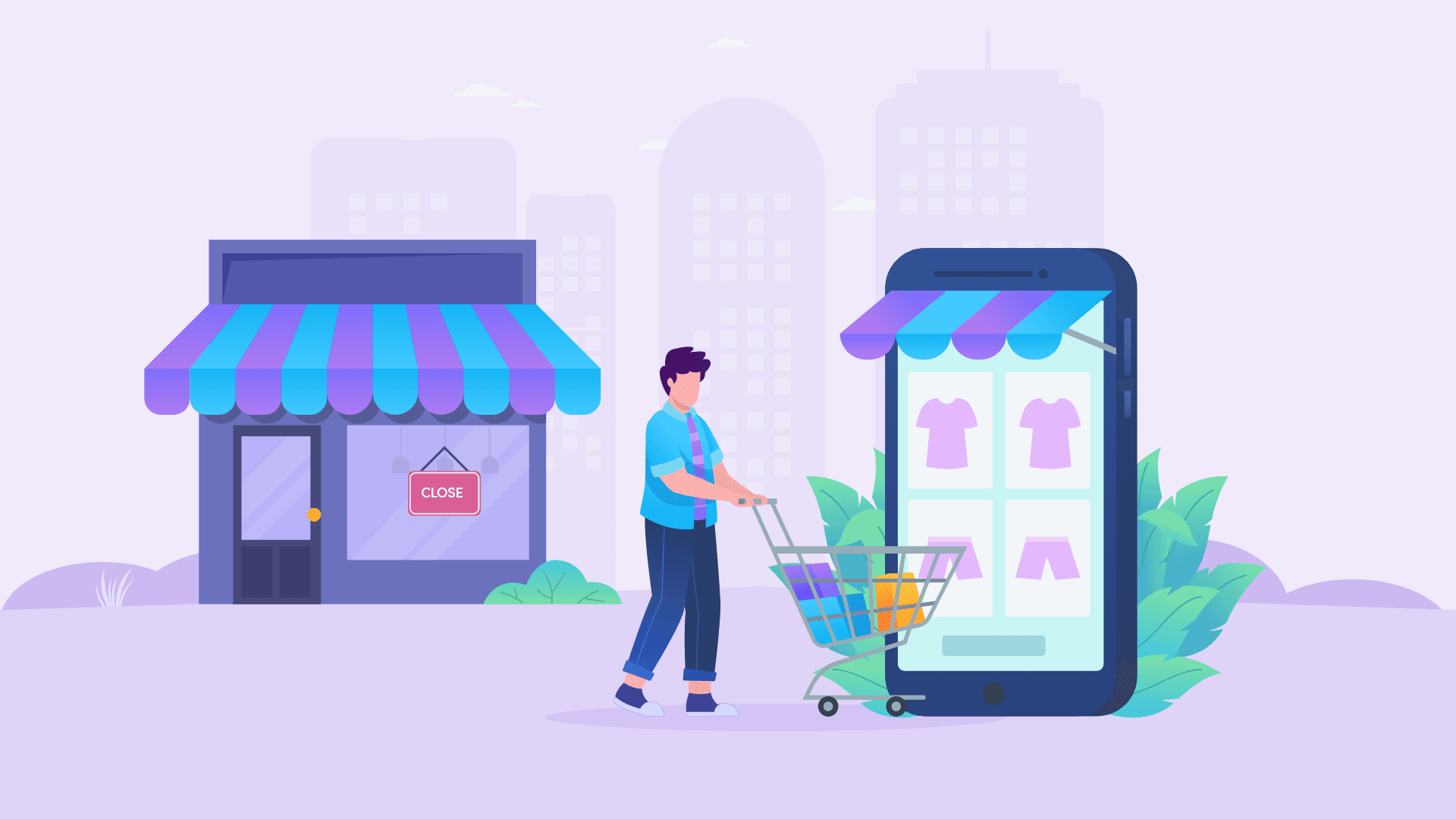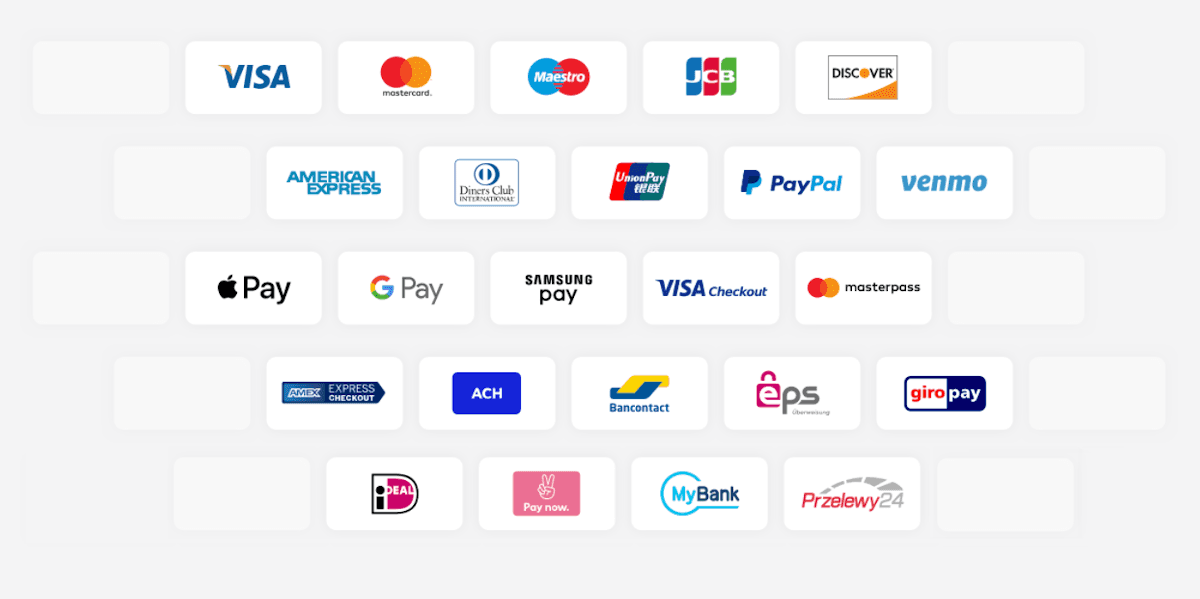Dec 14, 2020 | 11 minutes
From Brick and Mortar to Shopify: The Transition to Your First Digital Store
Are you a business owner looking to start selling online? In this article, we're looking at why and how physical stores can make the transition to ecommerce.

The transition from brick-and-mortar to selling online is never easy and can feel intimidating to many store owners.
However, we have reached a point where selling online (either exclusively, or in parallel to physical sales) cannot be delayed anymore.
Enough has been written about ecommerce to fill numerous guides and treaties, but let's summarize the benefits of selling online one more time, for the sake of those who aren't yet convinced:
Cost efficiency: with an online store you don’t need to worry about rent, utilities or cleaning up every night
Larger customer base: physical stores restrain your influence to a determined geographical area; with online stores, you can sell anywhere (as long as shipping services deliver)
Less efforts: an online store is open 24/7, and you don’t have to be behind the counter
Shopify might be the most popular ecommerce platform today. It allows business owners to easily build an online store, manage orders and receive payments. As a one-stop-shop (pun intended), it’s a great choice to start selling online.
We are conscious of the doubts that invade the successful brick-and-mortar owners, and do not question for a second their capacity to:
Run a business
Develop a faithful clientele
Offer great products
They are the embodiment of years of hard work, and we think that selling online is just the next logical step for most businesses out there - including those who haven’t even considered doing so yet.
Is it a daunting step? Of course! But that is why we wrote this guide: to help make the transition towards digital sales as smoothly as possible.
Let's take a look at it.
From brick-and-mortar to selling online in 6 steps
We’ve put together this list to showcase a straightforward way to get there, with solutions that are:
User-friendly
Easy to implement
Affordable
By the end of the list, you will have a clearer picture of what it takes to bring your business online, and how to do it.
1. Keep your customers in mind at all times
A very strong advantage you have as an existing store is that you already have customers.
This is valuable because you know who’s shopping at your store, and also because you interact with them on a regular basis, develop relationships and are well-aware of what they need.
This is gold for your online store.
Credit: Justinmind
Knowing your customers is one of the hardest things about starting a business. What good is a store if no one wants to buy what you’re selling, right?
This knowledge of your customer base will give you a headstart to sell online. Think about it, you already know:
What your customers look like: how old are they? Are they hip or more old-fashioned? Your customers' profile will be useful when creating your online store
What their purchasing habits are: how much is their average purchase? Do they come back often?
What they like and want: what are the best-selling products at your store? What is the most common feedback you receive from your customers?
This existing customer base will help you get started from the ground up. Ahead of creating your online store or even committing to doing so, you can already:
Talk to them about your idea to go online: would they be interested?
Collect their emails: they will be your first customers once you go live
Spread the word: they might know of someone that would be interested in shopping online at your store, or even help you set it up
The ability to communicate with existing customers is a real opportunity to get validation for your project.
2. Evaluate what you will be selling online
As a business owner, you already have a range of products you’re selling, and a fair idea of which are your best and worst performers.
This is another advantage compared to a new online store, because you can rely on existing data to base your decisions on.
While it'll be up to you to decide what to sell online, here are a few useful pointers to guide your decision:
Best-selling products: if these products perform well in your retail store, why not sell them online as well?
Underperforming items: another strategy is to offer online the items you’re having a hard time selling in person. Maybe a new audience online could boost the sales!
Unique products: are you selling products made by you? These might be the ones you want to highlight in your online store , as uniqueness pays off.
Make it a niche store: if your product offering is quite large, why not focus on one category of items for your online store? These will be easier to market and might attract an audience of experts and aficionados to your online store.
There’s not a right or wrong answer here, as a lot of online strategies are about trying, learning and improving. It's OK to fail at something; the important thing is to not be discouraged by mistakes, and to solve them of course.
This is another benefit of selling online, as you will have the freedom to experiment without the stress of fixed expenses that a physical store entails.
After deciding upon what you'll be selling, it's time to move straight into the action, and start to set up your first ecommerce store.
3. Select the easiest option to set up your ecommerce store
Something that holds back a lot of business owners is the idea that online stores are difficult to create and manage.
While this might have been true 10 year ago, starting an online store in 2020 is much easier and affordable. How come? Thanks to the leading ecommerce platforms, who provide the opportunity to create, manage and customize an online store with zero technical knowledge.
In case you're wondering, the most popular ecommerce platforms to start an online business are:
Shopify: the most popular ecommerce platform out there. Well-rounded and starting at $29/month, Shopify is a great, versatile option
Woocommerce: the logical choice for those who choose WordPress, as it is a plugin (or extension) of that platform. It's free, but you need to pay for hosting.
Wix: One of the most popular drag-and-drop website builders, Wix gives a lot of templates to choose from. This is a good choice for those who want to keep things simple and uncomplicated at all times.
Squarespace: With beautiful templates, it’s a great solution if you’re selling art, designer products or care a lot about design.
These ecommerce platforms are a good fit for anyone who is new to ecommerce. They offer turnkey solutions including everything you need to get started selling online, with minimal efforts needed for:
Hosting your website
Designing your store
Adding your products
Processing payments
Shipping items
We chose to highlight Shopify because it is the most convenient ecommerce platform for brick and mortar business owners.
Alternatively, other options are available. In case you don't feel confident enough to build your online store from scratch, there's always the possibility to sell on Amazon, Etsy or Ebay.
These online marketplaces come with pros and cons:
Pros:
Massive audience: millions of customers buy products on these platforms on a daily basis
Infrastructure: you won’t need to worry about hosting, billing, security and other technical issues, as all of this is provided by the platforms in question
Reputation: these are established brands, household e-commerce names; customers already trust them enough to shop there
Cons:
Less control: marketplaces enforce their own guidelines and rules, which might not align with yours
Brand loss: your identity as a store will be diluted in a marketplace where you’re just another seller
Shared revenue: selling on a third-party platform requires paying commissions
Whether you choose to go for an online store or a marketplace is related to your priorities, so make sure to ask yourself the following question: what makes sense for your business?
For the purpose of this guide, the following steps are focused on setting your own ecommerce store - let's keep going!
4. Choose a payment method for your e-shop
Payment methods are vital to ecommerce stores, as they allow customers to complete their purchases without leaving the site.
It's worth noticing that payment methods are third-party services that you will need to subscribe to, but before that happens, let's take a look at your options.
Credit: Braintree
The three most used payment processing alternatives are:
Paypal: the most popular, Paypal offers online checkout experiences, invoicing, and in-person payments
Stripe: a payment solution created specifically for ecommerce that allows for international payments and a lot of customization
Square: the best of both worlds. Square provides both online payment processing solutions and Point of Sale hardware (card readers, stands) for brick-and-mortar businesses
Each of these will require you to:
Create an account
Connect your bank account to your payment processor account
This way, they will serve as a financial bridge between you and your customers. Make sure to have a look at the fees for each platform, as well as other important features and aspects related to each one.
Using an ecommerce platform like Shopify will allow you to skip this implementation part, as it already features various payment methods within their "Shopify Payments" solutions. Their payment solutions allows Shopify users to benefit from a seamless integration for most credit cards and local currencies when creating a store.
5. Pick the best shipping option for your business and your customers
While shipping is a topic in itself, it can be boiled down to one question: how much control do you want to have on the shipping process?
Your answer to this question will determine the specifics of the shipping process, including:
Shipping rates
Shipping times
Packaging and wrapping
Inventory costs
Essentially, there are two shipping alternatives to consider:
Handle the shipping yourself
Contract a fulfilment center to do it for you
Both have their pros and cons. Let's take a quick look at these before moving forward.
Managing your own shipping
By managing the shipping yourself, you will be able to
Control the wrapping and packaging of products
Manage your own schedule, and deliver according to your needs and capacity
Choose between several courier services
If your products are expensive and you’re selling in small quantities, it might make sense to maintain a high-quality experience all the way to the packaging, which can be a powerful marketing tool in itself.
Credit: Manscaped
On the other hand, there are a few cons when handling the shipping by yourself, as you will have to:
Deal with taxes and fees, the latter of which vary often
Manage insurance and warranty-related issues
Do all the manual work by yourself
On top of that, handling shipping by yourself might require hiring someone if your store becomes successful.
Using a third-party shipping service
Third-party shipping services, also known as "fulfillment services" and "fulfillment warehouses" are nothing but companies that will take care of the whole shipping process for you.
By using a fulfillment warehouse on the other hand, you will trust a third-party company with:
Storing and managing your inventory in their own location
Packaging your products
Shipping to your customers
If you’re selling in large quantities, the amount of time and money you can save by using a fulfillment warehouse can quickly add up.
On the other hand, these services also have their cons. By handing down shipping responsibilities to a third-party company, you will be:
Limited in your wrapping and packaging options
Paying for the service, adding an extra cost to your budget
Responsible for a part of your business you have little control over (if a package is not managed properly, for example)
Ultimately, this is a decision you’ll have to make based on a lot of different factors, including:
Budget
How much time you can dedicate to logistics
The nature of the products you’re selling
Your customers’ expectations
How involved you want to be
Shopify provides you with both options. You can benefit from their discounted rates or just rely on their fulfillment services.
As with most things in business, there is no universal right or wrong answer here. The best option will come from a sound understanding of your business, and the careful consideration of the factors involved.
6. Develop your online presence to get attention from new customers
Having an online presence is the opportunity to reach new audiences that might never hear of your shop otherwise.
Most businesses achieve that by creating engaging social media profiles for their store.
Whether it’s Facebook, Twitter or Instagram, social media platforms are a great way for online businesses to:
Promote their products to existing and prospective customers
Communicate on discounts, events or opening hours
Engage with users by replying to questions and/or comments
Encourage clients to share their pictures, videos or feedback about products
Credit: MVMT
In 2020, a social media presence is a great way to boost your online presence and promote your products for free. Here are some quick tips you can easily implement today:
Be authentic: customers want a human tone of voice, just like in your physical store
Share pictures and videos: showcase your products and candid behind-the-scenes moments to be closer to your audience
Interact with customers: answer questions and acknowledge feedback to create an active community
Post regularly: 3 to 4 times a week is enough. Don’t worry, you don’t need to be glued to your phone
The Shopify Marketplace provides you with options to sell your products on social media. As social selling continues to get traction, social media integrations can help you sell anywhere across the web.
Other digital strategies such as email marketing or online ads are also effective. However, they require a certain level of expertise that is not necessary to focus on when launching an online store for the first time.
Conclusion
We know that brick-and-mortar businesses have their own way to do things, and that changes like these can be hard to digest for one reason or another.
However, the data is conclusive: selling online is a massive source of business and profits for countless stores around the world.
What's most, going from physical to digital sales has never been easier than today.
Platforms like Shopify empower business owners to create and manage their online stores with minimal technical knowledge. On top of all the tools and platforms you can use to launch your online store, there's the ultimate factor - that is the millions of people who buy online on a regular basis.
And in the end, it's always good to remember that good 'ole saying before taking a decision: if you don't do it, somebody else will.
This article has been updated on March 18, 2021.





